Kingdom Plantae Family Ranunculaceae Scientific name Hydrastis canadensis Rank Species | Order Ranunculales Genus Hydrastis
L. Higher classification Hydrastis | |
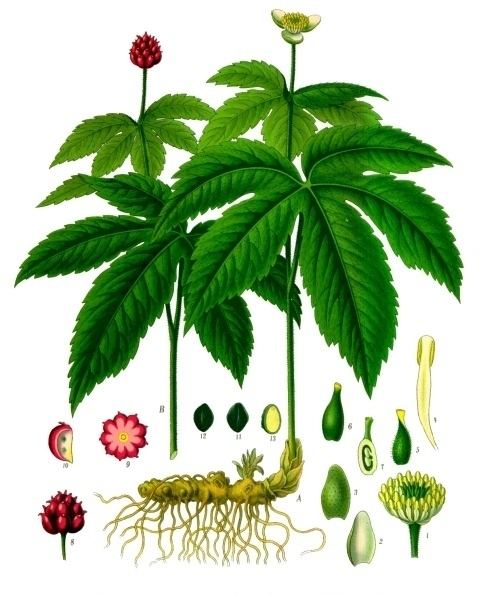 | ||
Similar Common barberry, Cascara buckthorn, Feverfew, Echinacea angustifolia, Blue cohosh | ||
All about goldenseal root
Goldenseal (Hydrastis canadensis), also called orangeroot or yellow puccoon, is a perennial herb in the buttercup family Ranunculaceae, native to southeastern Canada and the eastern United States. It may be distinguished by its thick, yellow knotted rootstock. The stem is purplish and hairy above ground and yellow below ground where it connects to the yellow rhizome. The plant bears two palmate, hairy leaves with 5–7 double-toothed lobes and single, small, inconspicuous flowers with greenish white stamens in the late spring. It bears a single berry like a large raspberry with 10–30 seeds in the summer.
Contents
- All about goldenseal root
- What is goldenseal
- Efficacy
- Traditional use
- Mechanism of action
- Constituents and modern pharmacology
- Toxicity
- Cautions
- Use for masking illicit drug use in urine drug tests
- Endangered status
- Literature
- References

In herbal medicine, goldenseal is used as a multi-purpose remedy, there however is little evidence it works. Goldenseal has the following purported uses: control muscle spasms, treat cancer, stimulate the heart and increase blood pressure, treat gastrointestinal disorders, treat conjunctivitis, manage painful and heavy menstruation, treat infections topically, reduce swelling and edema. Goldenseal may be purchased in salve, tablet, tincture form, or as a bulk powder. Goldenseal is often used to boost the medicinal effects of other herbs with which it is blended or formulated.
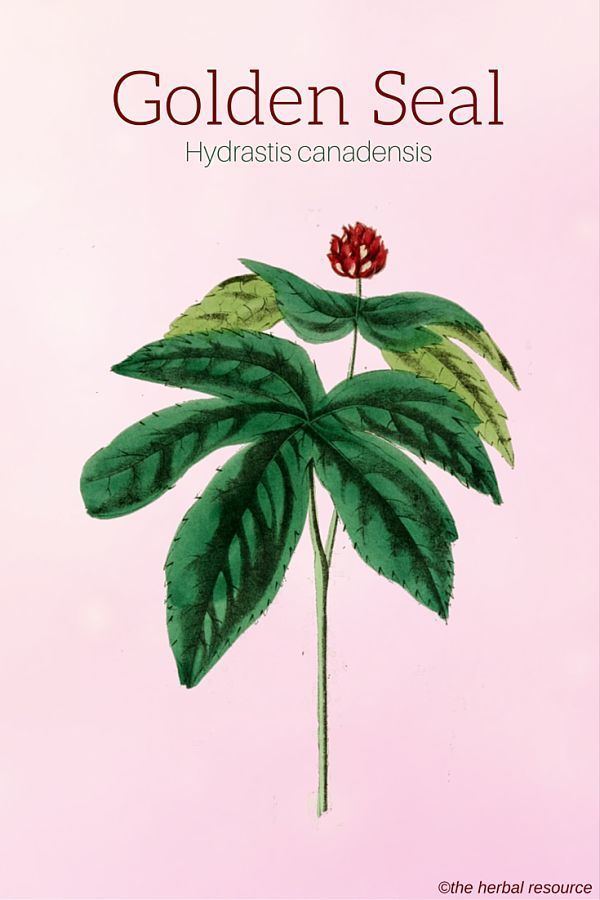
A second species from Japan, previously listed as Hydrastis palmatum, is sufficiently distinct that it is now usually treated in a separate genus, as Glaucidium palmatum.
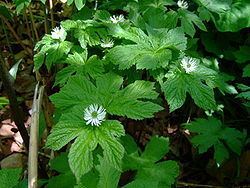
What is goldenseal
Efficacy
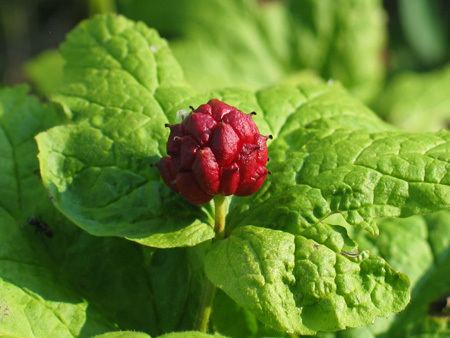
There is currently insufficient evidence to determine whether goldenseal is effective for any conditions. According to the American Cancer Society, "evidence does not support claims that goldenseal is effective in treating cancer or other diseases. Goldenseal can have toxic side effects, and high doses can cause death."
Traditional use
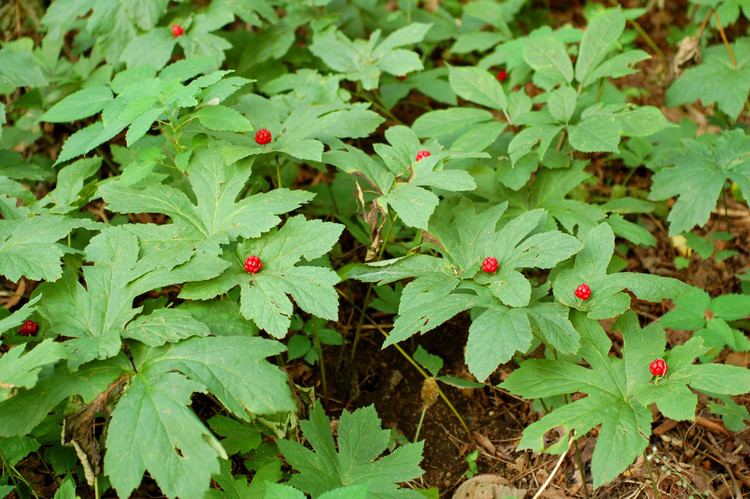
At the time of the European colonization of the Americas, goldenseal was in extensive use among certain Native American tribes of North America, both as a medicine and as a coloring material. Benjamin Smith Barton in his first edition of Collections for an Essay Toward a Materia Medica of the United States (1798), refers to the Cherokee use of goldenseal as a cancer treatment. Later, he calls attention to its properties as a bitter tonic, and as a local wash for ophthalmia. It became a favorite of the Eclectics from the time of Constantine Raffinesque in the 1830s.
Dr. John Henry Pinkard, a noted "Yarb Doctor" and producer of quack medicines in Roanoke, Virginia during the 1920s and 1930s, had a variety of potions and remedies that he prepared and sold out of his drugstore and shipped across the country. Some of the names were: "Pinkard's Hydrastic Compound" (evidently made from Goldenseal or "Hydrastis canadensis"), "Pinkard's Great Liniment" and "Pinkard's Sanguinaria Compound" (made with Sanguinaria). Many of his potions were based on herb lore taken from traditional slave and rural Virginia medical practices and local Native American remedies.
Herbalists today consider goldenseal an alterative, anti-catarrhal, anti-inflammatory, antiseptic, astringent, bitter tonic, laxative, anti-diabetic and muscular stimulant. They discuss the astringent effect it has on mucous membranes of the upper respiratory tract, the gastrointestinal tract, the bladder, and rectum (applied topically), and the skin. Goldenseal is very bitter, which stimulates the appetite and aids digestion, and often stimulates bile secretion.
Mechanism of action
Herbalist Paul Bergner investigated the research and has been unable to find case reports where the level of intestinal pathogens are lower after taking goldenseal. In fact, a study by Rabbani where men with E. coli induced diarrhea who had 42–48% reduced symptoms after taking berberine showed unchanged levels of intestinal bacteria, pathogenic or otherwise after taking goldenseal.
It appears likely that goldenseal shares with Mahonia (Oregon grape) and Berberis (Barberry) the ability to inhibit the drug resistance efflux pumps (MDR pumps) of bacteria, as discussed below.
Constituents and modern pharmacology
Goldenseal contains the isoquinoline alkaloids: hydrastine, berberine, berberastine, hydrastinine, tetrahydroberberastine, canadine, and canalidine. A related compound, 8-oxotetrahydrothalifendine was identified in one study. One study analyzed the hydrastine and berberine contents of twenty commercial goldenseal and goldenseal-containing products and found they contained variously 0%-2.93% hydrastine and 0.82%-5.86% berberine. Berberine and hydrastine act as quaternary bases and are poorly soluble in water but freely soluble in alcohol. The herb seems to have synergistic antibacterial activity over berberine in vitro, possibly due to efflux pump inhibitory activity.
Multiple bacteria and fungi, along with selected protozoa and chlamydia are susceptible to berberine in vitro. Berberine alone has weak antibiotic activity in vitro since many microorganisms actively export it from the cell (although a whole herb is likely to work on the immune system as well as on attacking the microbes and hence have a stronger clinical effect than the antibiotic activity alone would suggest). Interestingly, there is some evidence for other berberine-containing species synthesizing an efflux pump inhibitor that tends to prevent antibiotic resistance, a case of solid scientific evidence that the herb is superior to the isolated active principle. However, it is not yet known whether goldenseal contains a drug resistance efflux pump inhibitor, although many antimicrobial herbs do.
Toxicity
Most of the research that is popularly attributed to goldenseal has actually been into the constituent berberine, which goldenseal has in common with a variety of other plants including oregon-grape, Coptis, Phellodendron, barberry (Berberis vulgaris), and yellowroot (Xanthorhiza simplicissima). However, constituents frequently act differently in isolation than a whole herb acts in the body. In 1996, the committee of the European Union that regulates drugs placed barberry in a table of Herbal Drugs with Serious Risks without any Accepted Benefit because it contains berberine. Paul Bergner investigated the literature and was able to find only a single report of potential adverse effects of berberis species, berberine-containing plants, or berberine itself in a computer search of the MEDLINE and TOXLINE databases of the U.S. National Library of Medicine. This was a study in China that showed that berberine sulfate is inappropriate for the treatment of newborn infants with prenatal jaundice. However that is not a likely scenario in a country where babies born jaundiced are hospitalized, but it does lend credence to the traditional advice not to take goldenseal or other berberine herbs during pregnancy.
Research into the toxicology and pharmacology of goldenseal has focused on berberine and hydrastine, which are antimicrobial, chloretic and each have a variety of other properties helping immunity. But toxicity in a concentrated constituent does not translate to toxicity of the whole herb, which contains many other compounds. In one study, the lethal dose (LD50) for rats was 12 times lower with hydrastine than with goldenseal extract.
California is proposing to list goldenseal root powder as a carcinogen.
A study where pregnant rats were fed about 47 times the usual human dose of 26 mg/kg concluded, "Maternal liver weights were increased at ≥6250 ppm, suggesting possible enzyme induction. There was no definitive evidence of developmental toxicity in this study." Another study, where mice were fed ~300 times the estimated human intake from dietary supplements, concluded, "Maternal liver weights were increased at greater than 12,500 ppm, but in the absence of treatment-related histopathological lesions. At the high dose, definitive evidence of developmental toxicity was limited to a statistically significant (~8%) reduction in average fetal body weight per litter."
The lethal dose (LD50) of berberine isolates in humans is thought to be 27.5 mg/kg. Berberine is absorbed slowly orally; it achieves peak concentrations in 4 hours and takes 8 hours to clear Berberine is excreted in the urine and human studies of berberine show evidence it can be absorbed through the skin. Pharmacokinetic data is not available for hydrastine or goldenseal root powder. Berberine in humans can cause blocking of receptors in smooth muscle, blocking potassium channels in the heart and reducing ventricular tachycardia, inhibiting intestinal ion secretion and toxin formation in the gut and increasing bile secretion.
While goldenseal, like all alkaloid-rich herbs including coffee and tobacco should be avoided during pregnancy and given to very young children with care, it appears that goldenseal is unlikely to be toxic in normal doses. Interactions with drugs with narrow therapeutic windows like warfarin, ciclosporin, protease inhibitors and cardiac glycosides are potential concerns.
Side effects of goldenseal may include "digestive complaints, nervousness, depression, constipation, rapid heartbeat, diarrhea, stomach cramps and pain, mouth ulcers, nausea, seizures, vomiting, and central nervous system depression. High doses may cause breathing problems, paralysis, and even death. Long-term use may lead to vitamin B deficiency, hallucinations, and delirium." In addition, goldenseal may cause brain damage to newborn babies if given to them directly or if taken by their breastfeeding or pregnant mothers, and may affect blood pressure unpredictably because it contains several different compounds that have opposite effects on blood pressure.
Cautions
Taking goldenseal over a long period of time can reduce absorption of B vitamins. Avoid goldenseal during pregnancy and lactation, with gastrointestinal inflammation, and with proinflammatory disorders. A recent study (2011) found rats fed with Goldenseal constantly for two years had a greater tendency towards tumor formation.
Goldenseal has been found to have inhibited cytochrome P450 CYP2D6, CYP3A4, and CYP3A5 activity by approximately 40%, a statistically and clinically significant reduction. CYP2D6 specifically is a known metabolizer of many commonly used pharmaceuticals, such as antidepressants (including all SSRIs except for fluvoxamine), neuroleptics, and codeine. Combining Goldenseal with such medications should be done with caution and under the supervision of a doctor as it can lead to serious - perhaps fatal - toxicity. Those with a genetic deficiency in these enzymes are at particular risk.
Use for masking illicit drug use in urine drug tests
Goldenseal became a part of American folklore associated with chemical testing errors, from pharmacist John Uri Lloyd's 1900 novel Stringtown on the Pike. In the book, the victim's habit of taking goldenseal in the form of digestive bitters, causes this herb to appear as the poison strychnine in a chemical test - thus suggesting murder. It has been used on occasions in this century to attempt to mask the use of morphine in race horses (without success).
Two studies have demonstrated no effect of oral goldenseal on urine drug assays over water alone. Subjects who drank large amounts of water had the same urine drug levels as subjects who took goldenseal capsules along with the water.
Endangered status
Goldenseal became popular in the mid-nineteenth century. By 1905, the herb was much less plentiful, partially due to overharvesting and partially to habitat destruction. Wild goldenseal is listed in Appendix II of the Convention on International Trade in Endangered Species of Wild Fauna and Flora (CITES), which by definition means harvest from public land is prohibited and may require a permit to export, although trade of the plants is still deemed to be undetrimental to the wildlife population and is otherwise unregulated. More than 60 million goldenseal plants are picked each year without being replaced. The process of mountain top removal mining has recently put the wild goldenseal population at major risk due to loss of habitat, illegality of removing goldenseal for transplant without registration while destruction in the process of removing the mountain top is permitted, and increased economic pressure on stands outside of the removal area.
Many herbalists urge caution in choosing products containing goldenseal, as they may have been harvested in an unsustainable manner as opposed to having been organically cultivated.
There are several berberine-containing plants that can serve as useful alternatives, including Chinese coptis, yellowroot, or Oregon grape root.
